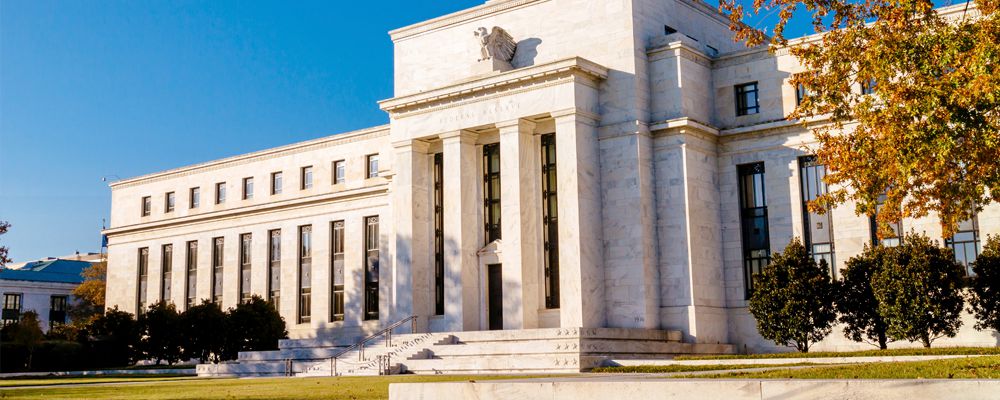At this stage an overshoot is as likely as a pivot.
- Friday, November 4, 2022
 The central outlook from fund managers is that the world will fall into recession but that it may be shallow. If we use the two quarters of negative GDP growth as the definition of a recession, then the USA has been in recession this year already. However, a recession is usually accompanied by a meaningful pick up in unemployment and this is far from the case. The current unemployment rate is at a multi decade low of 3.4% and new job openings have been strong every month.
The central outlook from fund managers is that the world will fall into recession but that it may be shallow. If we use the two quarters of negative GDP growth as the definition of a recession, then the USA has been in recession this year already. However, a recession is usually accompanied by a meaningful pick up in unemployment and this is far from the case. The current unemployment rate is at a multi decade low of 3.4% and new job openings have been strong every month.
Other indicators of a downturn such as business confidence surveys and inflation show a different story, one of stagflation. Equities usually suffer during economic slowdowns as corporate profitability is hit by weaker growth and rising costs from higher wages and interest rates.
The magnitude of equity losses this year has been greater as compared to past slowdowns despite the maintenance of corporate earnings. This is due to the high level of monetary tightening. The contraction in economic activity has come after the very sharp recovery from Covid lockdowns.
The S&P 500 started the year at 4766 and in early November stood at 3725, a fall of 21.8% while US interest rates have risen from 0.25% in January to 4% now in November.
With US inflation currently at 8.2%, comparisons are being made to the stagflation period of the 1970’s when inflation soared due to an oil price shock but was not managed well as inflation returned for much of the decade. The Fed has learned that lesson and is more likely to push down on inflation harder and longer which is itself a recession worry.
While the 1970 inflation surge was caused by oil hitting US$150pb, this is not the case now. Inflation is the result of an imbalance between supply and demand for goods after the ending of Covid lockdowns and this has since been magnified with the invasion of Ukraine by Russia and the resulting sanctions, as well as the impact on supply chains by China’s brutally restrictive and ineffective zero Covid policy. Another factor of this slowdown is the number of workers who have withdrawn from the work force which has created a tighter labour market.
In the USA there are 10.6 million unfilled job vacancies but 5.7 million unemployed seeking work. While early retirement, health or family circumstances may account for a meaningful number of people not seeking work, it is now likely that with inflation impacting the cost of living, that more will seek work. As it is, there are currently two jobs for each job seeker. The recession may cut the number of vacancies and higher wage growth may be an incentive to return to work.
Any easing in the job market will be seen as positive by analysts as this takes the pressure off the Fed to continue to raise rates. However, the US economy is still creating jobs. There were 315,000 new vacancies in August, 263,000 in September and 239,000 in October. Unemployment was 3.5% in October.
There has been talk of the Fed ‘pivoting’ to a softer position on interest rate rises. While US headline inflation looks to have peaked but key parts of total inflation still look sticky and nothing is likely to change policy until the sections such as housing, core services and food inflation fall and job growth declines. Unemployment is still at its lowest level for several decades. The labour market matters most for inflation due to its impact upon wage growth. Low unemployment usually means higher wage growth.
Market have been aware that the Fed may with improving inflation data, ease the rate of expected rate rises but as of now the Fed is focussed on addressing elevated inflation through monetary tightening.
In the past a policy ‘pivot’ has been the result of an event rather than just deteriorating economic numbers. The Fed hope to rein in inflation through tighter financial conditions. We may not see any easing of rate rising until there is confidence in a victory over inflation and that is likely to happen in the USA first.
The opposite of a rate pivot is that the Fed over hikes in its desire not to repeat the errors of 1972 and raise and retain rates more than is needed, that create a recession. At this stage an overshoot is as likely as a pivot.

Chris Davies
Chartered Financial AdviserChris is a Chartered Independent Financial Adviser and leads the investment team.
About Estate Capital
Financial Services
Our Contacts
7 Uplands Crescent,
Swansea, South Wales,
SA2 0PA.
Tel: 01792 477763
